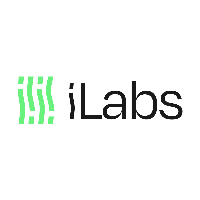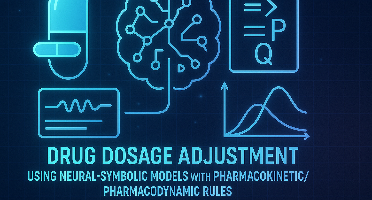
Innovations Labs
Project OwnerDeveloping Company
DEEP Connects Bold Ideas to Real World Change and build a better future together.
Coming Soon
We are introducing an Explainable AI (XAI) framework for personalized drug dosage adjustment, combining the strengths of neural networks and symbolic logic to provide safe, patient-specific recommendations. By integrating pharmacokinetic (PK) rules with data-driven learning using neuro-symbolic systems Knowledge-Embedded Neural Networks (KANs), our system dynamically adjusts drug dosage based on individual patient characteristics—such as age, weight, renal function, and liver metabolism. Unlike traditional black-box models, this system will be fully interpretable, allowing clinicians to see why a particular dosage was recommended, reducing the risk of underdosing or toxicity.
This RFP invites proposals to explore and demonstrate the use of neural-symbolic deep neural networks (DNNs), such as PyNeuraLogic and Kolmogorov Arnold Networks (KANs), for experiential learning and/or higher-order reasoning. The goal is to investigate how these architectures can embed logic rules derived from experiential systems like AIRIS or user-supplied higher-order logic, and apply them to improve reasoning in graph neural networks (GNNs), LLMs, or other DNNs. Bids are expected to range from $40,000 - $100,000.
This phase establishes the foundational architecture and strategy for the neuro-symbolic drug dosage system. It focuses on defining how symbolic medical logic and neural networks will work together, and how patient data will be responsibly sourced, processed, and safeguarded.
Develop a comprehensive system design outlining the neuro-symbolic AI architecture. Define integration strategy for symbolic knowledge base (SKB) and neural module. Identify relevant pharmacokinetic/pharmacodynamic rule sets and ontologies (e.g., BNF, FDA). Create a data acquisition and preprocessing plan, detailing how to source, clean, de-identify, and ethically store EHRs and clinical data. Establish ethical frameworks and bias mitigation strategy.
$12,000 USD
Delivery of a detailed system architecture document and modular blueprint. Verified mappings of symbolic rules and clinical guidelines. Approved data governance and compliance documentation (HIPAA/GDPR-aligned). Evidence of partnerships or access plans to real-world datasets or public health data. Ethical review board alignment (or waiver plan) and risk mitigation matrix completed.
This milestone focuses on the actual building of the neural-symbolic engine. It includes training the neural model on clinical datasets, encoding logic rules, and integrating both components to form a working prototype capable of producing safe, interpretable dosage recommendations.
Train a deep learning model using anonymized clinical datasets to predict dosage outcomes and patient-specific responses. Encode pharmacological constraints and clinical dosing rules within the Symbolic Knowledge Base. Seamlessly integrate the symbolic and neural components using a hybrid architecture. Implement an explainability layer using natural language or logic flowcharts to clarify dosage decisions. Validate system outputs using test cases and simulated patient profiles.
$24,000 USD
A functioning hybrid model capable of generating dosage recommendations. Logical rule execution demonstrably modifying neural output based on safety conditions. Case-by-case interpretability module that can show “why” a dosage was chosen. Performance report including metrics on accuracy, safety, and explainability. Successful internal demo or clinician-reviewed simulation sessions.
The final milestone focuses on real-world validation, feedback loops, and final project outputs. The prototype will be tested in pilot or simulated environments, refined with expert feedback, and packaged with all documentation and materials needed for further clinical deployment or research use.
Deploy the system in a testbed (simulated EHR system or sandboxed environment) and gather feedback from medical professionals. Refine model behavior based on user input through a human-in-the-loop feedback mechanism. Develop full documentation including source code summaries, user manuals, compliance protocols, and academic whitepapers. Prepare a secure, interactive demonstration platform. Deliver a scale-up roadmap addressing regulatory, technical, and clinical pathways.
$24,000 USD
Positive evaluation results from simulated or pilot deployments showing accuracy and usability. Feedback loop successfully integrated to enable adaptive model improvement. Completed documentation and compliance guides ready for research, clinical, or investor audiences. Hosted live demo (or video walkthrough) showing real use cases and output interpretation. Defined scale-up roadmap for regulatory approval (FDA/CE), institutional integration, and commercialization.
Reviews & Ratings
Please create account or login to write a review and rate.
Check back later by refreshing the page.
© 2025 Deep Funding
Join the Discussion (0)
Please create account or login to post comments.